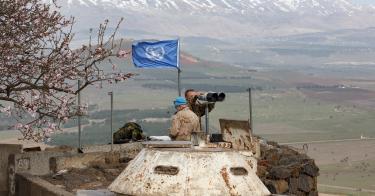Hard to believe it’s even possible, but the Middle East got more troublesome over the weekend with the Israel Defense Forces’ shoot-down of an Iranian unmanned aerial vehicle — a UAV, or “drone” — which violated Israeli airspace.
Israeli forces not only destroyed the Syria-based drone, they also reportedly launched a series of stinging air strikes against as many as a dozen Syrian and Iranian targets across the border in Syria.
According to Israel, the drone is a reverse-engineered copy of the stealthy U.S. RQ-170 Sentinel UAV lost over Iran in 2011. And though the immediate mission of the Iranian drone isn’t publicly known, Israel’s signal to Syria and Iran is quite clear.
That is: It won’t brook a growing Iranian threat from Syria.
Israel’s concern is well-founded. Iran could very well be setting up shop in Syria as the security situation there turns decidedly from dealing with ISIS to determining who will dominate this strategic Middle Eastern country.
Iran, understandably, wants to be the key outside power player in Syria.
For the mullahs, Syria is a fundamental building block — in addition to Iraq and Lebanon — in Tehran’s plans to cobble together a swath of power across the Middle East, spanning from the Persian Gulf to the Mediterranean Sea.
Of course, as its closest ally, Tehran has long had clout in Damascus. But the Syrian regime’s indebtedness to the Iranian theocracy for rescuing it from the dustbin of history during the ongoing civil war runs deep.
The payback to Tehran could come in a persistent Iranian military presence in Syria. As it does in the real estate business, “location, location, location” also counts in security issues — big time.
Indeed, Iran would be able to project power against Israel from just across the Syrian border courtesy of the Iranian Revolutionary Guard’s Quds force, offensive weapons and intelligence capabilities.
Having Iran in Syria also endangers neighboring Lebanon — the home of Tehran’s terror ally, Hezbollah. Iran could more efficiently and effectively support the terror group’s effort to dominate the country as well as threaten Israel to the South.
Think of it: The mullah’s missiles on the Mediterranean.
While seemingly running against the grain of Iran’s modern strategic culture for basing its forces abroad, the prospect of Tehran militarizing parts of Syria or Lebanon long-term is deeply alarming — to say the least.
Indeed, a quick look at the map shows that, if successful, Iran would have influence over of a big chunk of the Middle East, allowing Shiite, Persian Iran to threaten more Sunni Arab states and nearly encircle American ally, Israel.
There’s no question this isn’t good for U.S. interests either, but especially with U.S. forces deployed across the Middle East on counterterrorism missions; Iran is no fan of the United States.
Of course, the bloody, nearly 7-year-old Syrian civil war is probably far from over — not to mention that other major powers such as Russia, Turkey, Saudi Arabia and the United States have a say in Syria’s future.
But considering this weekend’s drone incursion, it could be just the opening salvo of conflicts to come from an emboldened Tehran — meaning now would be a good time to assemble a coalition to pre-empt Iranian expansionism.
This piece originally appeared in the Boston Herald



